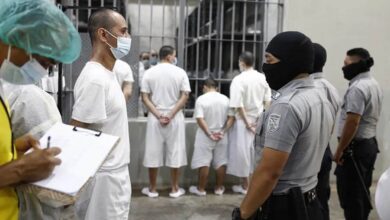The protests in Cuba are more and more constant and the regime knows it. The Government of Díaz Canel sought, in any way, to prevent the peaceful demonstrations of November 15, but the unrest has not gone away.

The island seems to have entered a spiral of protests in Cuba, the voices seeking a change on the island are getting louder and louder. Photo: Voice of America
LatinAmerican Post | Santiago Gómez Hernández
Listen to this article
Leer en español: Gobierno disuade las protestas en Cuba, pero no el sentimiento de cambio
There seems to be a spiral of protests in Cuba, the voices seeking change on the island are getting louder and louder. Despite the fact that last Monday, the police repression of the regime, and the interests of silencing dissident voices, it is felt that on the island there is a longing for freedom, which has not been felt in a long time.
The only way the Cuban government found to postpone what would be a new episode of massive protests in favor of democracy and freedom was with arrests of the leaders. An immense police deployment prevented several organizers of the marches from leaving their homes. This was evidenced by various international media and testimonies collected by social networks, of the Miguel Díaz-Canel government's strategy against these opponents. However, while on the one hand there was repression against the opponents, the president accompanied an "anti-imperialist" demonstration called on the eve of 15N as a method of counter-protest.
Cuba is limited to a fight between red and white scarves
The pro and anti-government marches have been characterized by the adoption of clothing items. While those who openly criticize the president and the communist regime today wear white, those who are followers of Díaz-Canel wear red scarves.
Also read: Is Cuba on the verge of a democratic spring?
This has meant that anyone who wears a white garment can be subjected to pressure by the police or groups that defend Castroism. These groups loyal to the Government, assure that the demonstrations are organized, financed, and supported from Washington or Miami (failing that), something that ignores the independent role and the valid claims of various Cuban sectors dissatisfied with the current (or historical) situation of the island, which has been aggravated by the Covid-19 pandemic.
⚠️⚠️Así responden estos jóvenes desde Santa Clara a un acto de repudio… las imágenes de estos mítines violentos se suceden a lo largo de todo el país este #15NCuba!#TodosSomosArchipielago pic.twitter.com/KFG2inUgvZ
— Mag Jorge Castro???????? (@mjorgec1994) November 15, 2021
What appears to be a Cuban spring puts the longest-lived dictatorship in the entire hemisphere in check. But this shows us an important lesson, it was not with the economic blockades or armed incursions, but with music, artistic demonstrations, and the union of the opposition sectors that the largest protests in decades of dictatorship have been achieved.
However, it is also demonstrated that the Cuban state apparatus still has the power and strength to intimidate and silence dissident voices, however numerous they have become. Precisely, it will be necessary for new forms of protest and organization to be used in order to evade the repression and intimidation that Cuba has always shown against those who dare to raise their voice in protest. The support of the international community to guarantee the fulfillment of the human, democratic and political rights of opponents will be vital.
Already on July 11 of this year, Castroism saw its dictatorship shake for the first time in the face of spontaneous protests that arose through social networks and cultural movements framed in the song "Patria y Vida", which reflects the discomfort of a significant number of Cubans against Díaz-Canel. However, several Latin American governments have preferred to maintain a political line in defense of the communist government. Leaders like Andrés Manuel López Obrador in Mexico avoided referring to the protests and instead extolled the independence of the Cuban government.




